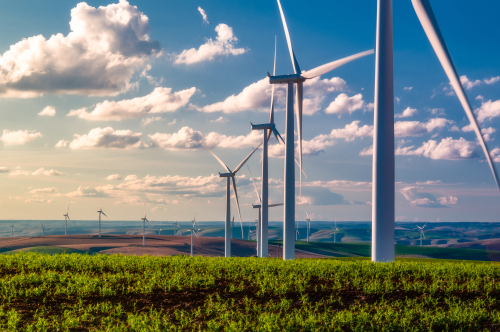Sandia National Lab researchers develop new technology for wind turbines

Researchers at Sandia National Laboratories have developed a fundamentally new type of rotary electrical contact that would be well suited for use in wind turbines.
Sandia’s new Twistact technology was motivated by the need to eliminate expensive rare-earth magnets in utility-scale direct-drive wind turbines. Most of the current utility-scale wind turbines are dependent on rare-earth magnets. However, these materials come at a high initial cost and are vulnerable to supply chain uncertainties.
“Twistact originated by asking ourselves some really challenging questions,” Jeff Koplow, Sandia research scientist and engineer, said. “We knew it could be game-changing if we could find a way to get around the limited-service lifetime of conventional rotary electrical contacts. I started thinking that maybe not every conceivable rotary electrical contact architecture has been thought of yet. We spent a lot of time considering if there was another plausible way.”
Twistact takes a novel approach to transmitting electrical current between a stationary and rotating frame, or between two rotating assemblies having different speeds or rotational directions. The resulting innovation, called Twistact, uses a pure-rolling-contact device to transmit electrical current along an ultra-low-resistance path. As such, Sandia researchers said it would be ideal for application in wind turbines. Further, the technology proves beneficial in lowering costs, improving sustainability, and reducing maintenance.
“When you weigh in the fact that rare-earth metals have always been in short supply, that their mining is notorious for its adverse environmental impact, and that competing applications such as electric vehicles are also placing demand on rare-earth metals, the value proposition of Twistact becomes clear,” Koplow said.
Sandia is currently exploring opportunities to partner with generator manufacturers and others in the renewable energy industry to assist with the transfer of Twistact technology into next-generation direct-drive wind turbines. Also, Sandia is open to partnering on the development of high-RPM Twistact technology for applications such as electric vehicles or doubly fed induction generators.
Koplow credits Sandia’s Laboratory Directed Research and Development program for its investment in Twistact. “Twistact represents a pretty radically different idea,” Koplow said. “That takes courage to get behind and fund.”
Sandia National Laboratories is a laboratory operated by National Technology and Engineering Solutions of Sandia LLC, a wholly-owned subsidiary of Honeywell International Inc., for the U.S. Department of Energy’s National Nuclear Security Administration. Its main facilities are in Albuquerque, N.M., and Livermore, Calif.
